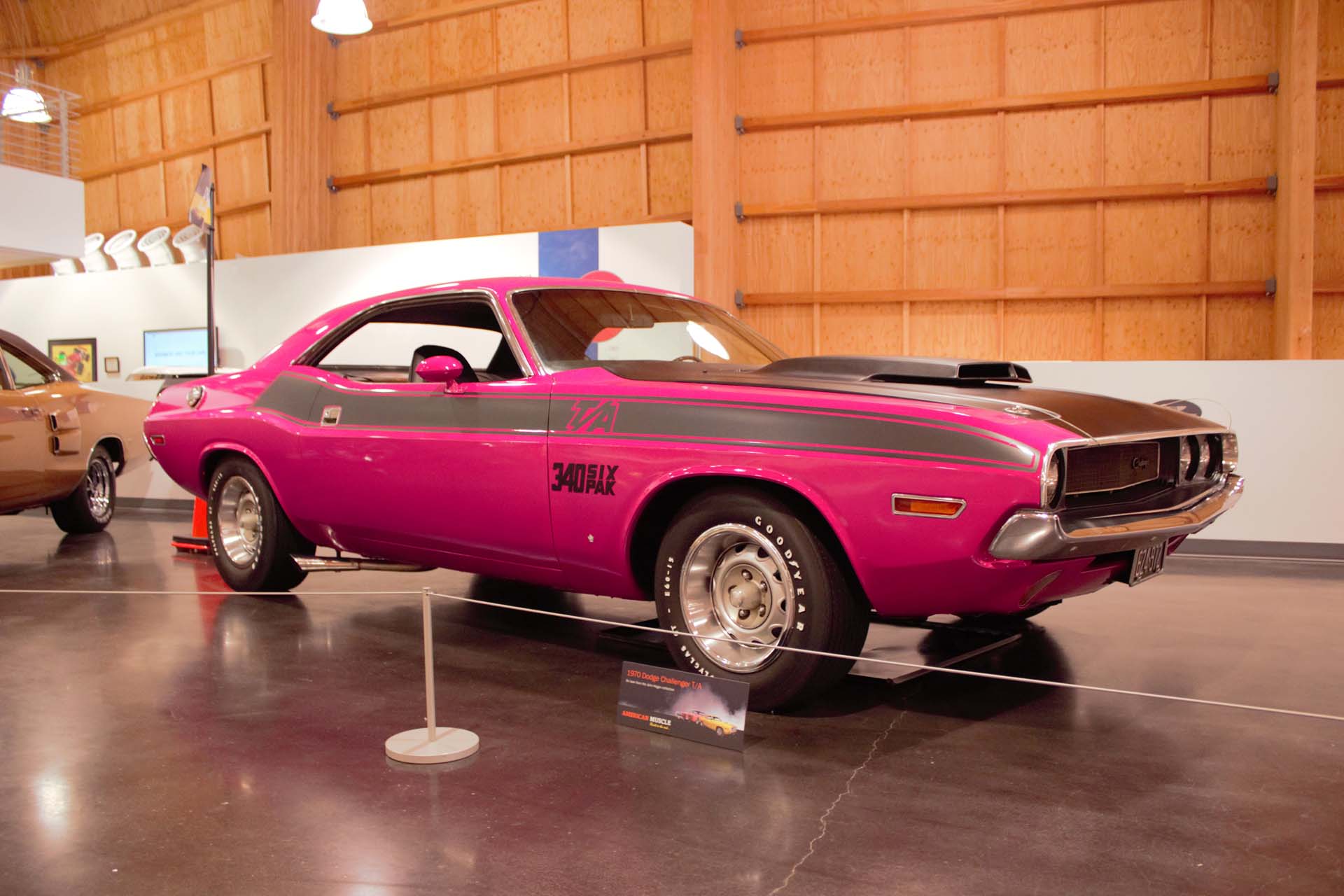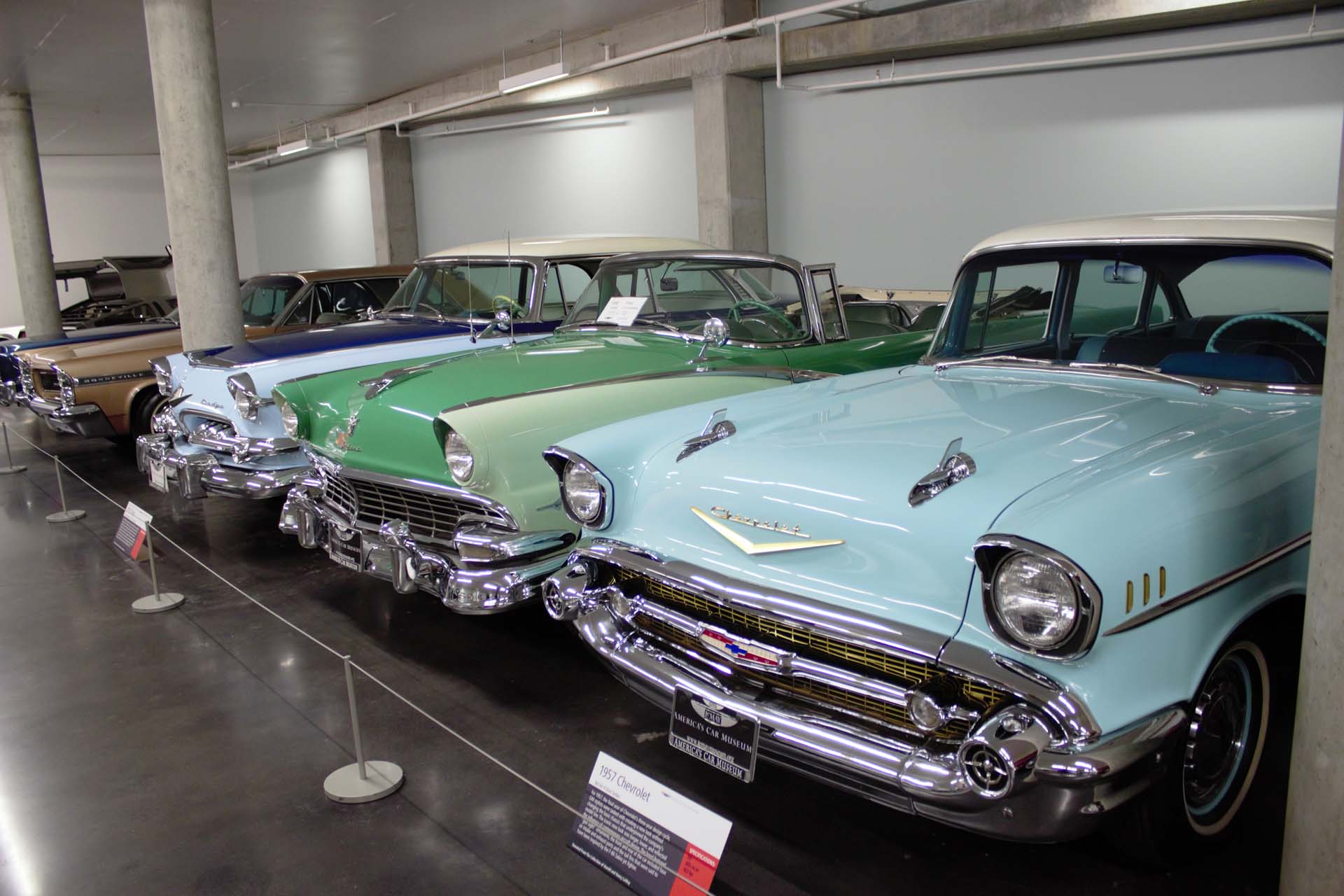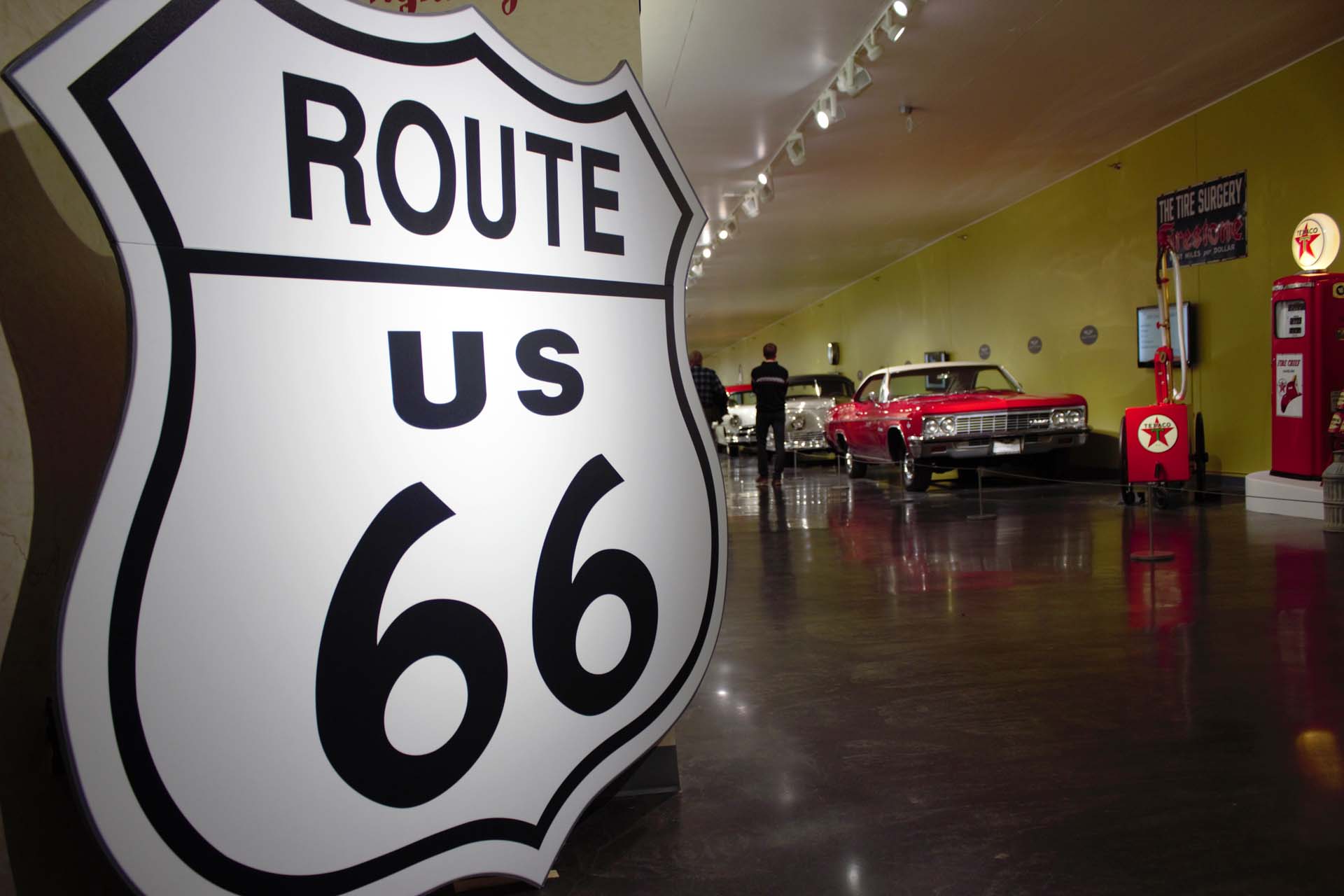If you’re going to call yourself “America’s Car Museum”, well, let’s just say you’d better be ready to walk the walk.
Indeed, it’s not like there’s a shortage of these venues in the U.S.A.; there’s the recently-renovated Petersen in Los Angeles (which stores the Tim Burton–era Batmobile...), and the Blackhawk just up the I-5 from there. Moving East, you’ve got the all-encompassing massiveness that is the Henry Ford in Dearborn, MI (bit unfair of a comparison, that – cars make up only a small portion of the exhibits there), the exclusivity that is the Walter P in Auburn Hills, MI and moving south from that, the hall of fame museum at Indianapolis Motor Speedway, and the Living Legends of Auto Racing museum in Daytona, FL.
So, if you’re the LeMay museum, you’d better bring it.
Located in the (not so) picturesque town of Tacoma, WA, where it rubs shoulders with the concrete monolith that is the Tacoma Dome, the LeMay museum actually only represents a fraction of the collection owned by the LeMay family. Started by the late Harold LeMay in 1952 when he purchased a ’34 Packard, the collection has grown to over 1,900 cars, trucks and even a double-decker bus from merry olde England.
Don’t think the small portion of the percentage on display in the actual museum itself will leave you feeling unfulfilled, however. Indeed, while I spent over three hours there, I could have spent a lot more considering not just the exhibits but the sheer amount of information that’s available.
Your trip starts out as you’d probably expect of something that calls itself America’s Car Museum; after all, what kind of museum with that moniker wouldn’t start you off with an exhibit featuring America’s gift to car lovers: the muscle car?

Indeed, as soon as you pay your (quite reasonable—but more on that in a minute) entry fee, you’re greeted with all manner of heavy American metal, roughly arranged by year and manufacturer. There’s a pair of kissing cousin Mopars over here - a 1970 AAR ‘Cuda, and a Challenger T/A of the same vintage, both finished in Panther Pink, of course - there’s a ’69 Yenko Camaro over there, and a gorgeous Pontiac GT convertible complete with redline tires in that corner. The 20 minutes I spent here weren’t near enough.
That’s just the first exhibit.
If you’re more fascinated by that other staple of American motoring, the pickup truck, then the next exhibit is probably for you. It’s an exhibit dedicated, in its entirety, to the Ford F-Series and even if Ford trucks aren’t your thing, you have to respect the cross section presented here. You’ll find everything from a ’72 F-100 to a ’52 Mercury M-3 – specifically developed to be sold in rural Canada, whose towns often didn’t have both a Ford and Mercury dealership – and it’s a special kind of awesome to see the side-by-side display of a ’15 F-150 and that same ’72, just to see how far the light duty pickup has come.

The museum is actually arranged in kind of a double-helix style and can be toured either clockwise or counterclockwise, and around the corner from the F-Series display is the last exhibit before the split.
I would imagine it was planned this way because what follows is an exhibit that looks to explain the very genesis of the car world; how horse-drawn carriages evolved to ditch the horse, on to custom coachbuilding and finally to assembly-line tech, all in a 100-foot span. The info on the placards has to be seen to be believed, and you could probably get a pretty good grade on a high-school history paper using just that wall for your research. Hupmobiles, Rolls-Royces, Lincolns, Buicks—it’s all here, each car accompanied with a stats placard.
After all that, though, is when the fun really starts. There is far too much content on-hand to describe here – we’re talking cars parked door handle to door handle, spanning the length of entire city blocks – but a few highlights absolutely deserve mention.
One of the biggest exhibits is a hall called “Lucky’s Garage”, which features the more 'normal' cars of their eras. We’re not talking Bentleys and Corvettes, here; we’re talking midsize sedans and wagons, the likes of which you’d see in the drive-in, at the supermarket or in suburban garages. On our sister site Autos.ca, we will often run comparison tests of three cars or more; it’s cool to go to the LeMay museum and see, parked side by each, a ’56 Dodge, a ’56 Ford and a ’57 Chevrolet, a look at what our story may have looked like back then.

Also in Lucky’s is a fantastic diorama of a garage, circa 1920 or so; the Ford V8 sedan there is cool, but where else can you see what a spare tire rack may have looked like in 1920? Or the period-era tools used to work on that Ford? If the cars themselves don’t bring you back in time, then this surely will.
An exhibit or two after Lucky’s, after you’ve passed an example of the Flintstone's car used in the live-action 1994 film, as well as a ’57 Plymouth Fury of Christine fame among others, comes one of my two biggest highlights at the LeMay.
It can be called a lot of things, but I like to call it “Temple of Kitsch”, a line borrowed from one of the wall displays in the exhibit, which is all about the genesis, the progression and the eventual demise of The Mother Road, Route 66.
It holds a special place in my heart as I was lucky enough to experience the route almost in its entirety in 2014, where we drove all the way from Chicago, IL to Los Angeles, CA along what’s left of the original road. I didn’t make it all the way to L.A., but I made it one stop short and since I’ve been to the end point just off of the Santa Monica Pier numerous times, I’ll can say I’ve done it all.
Travel along Route 66, and you’ll experience a veritable time capsule of what life was lie back then, with some of the ruins there – a Phillips 66 gas station here, a no-tell mo-tel there – an eerie reminder of what was the death of the American Dream for some.

LeMay, for its part, has done a masterful job of recreating the feeling of what it’s like on the road, with the added bonus of seeing the cars that drove along it in its heyday. When I travelled the route, I was given a guided tour by a Route 66 expert – yes, these exist – who was able to show us some of the stuff off the beaten track that your average guidebook might miss. Obviously, the LeMay exhibitors have done their research because along with photos and info of the most obvious sights, they managed to sneak in some nuggets that only a seasoned guide would know about.
That exhibit dovetails nicely with my next favorite of the bunch, titled simply “NASCAR”. It’s a good fit because as much as the Good Ol’ Boys may not want to admit it, NASCAR started when a bunch of bootleggers – who would take their souped-up cars on roads branching off of Route 66 during its heyday – no longer needed to outrun the Feds, so they decided to start outrunning themselves instead. The exhibit even features a ’36 Ford decked out like a bootlegger would, complete with bottles of moonshine crowding the back seat.
Due to the museum’s layout, you could see this exhibit either way, but do try and start with that Ford; the cars are aligned in chronological order from there, and it’s great to see how far the sport has come, from the old Chevy Impalas that hardly had seatbelts let alone a HANS devise, to the NASACAR Car of Tomorrow, whose identity is defined only by headlight, taillight and emblem decals.
The piece de resistance, however, is a 1970 Dodge Charger Daytona, whose bewinged, bright orange paintwork provides a guiding light at the end of the exhibit.

There’s interactive stuff, too; try your hand at “driving” a 1920 Buick - you actually get to sit in it and operate the controls, which, presumably, feel as they would have all those years ago – check the intricately detailed slot car course plus virtual driving simulators, where you strap in and tackle some of the world’s most famous racetracks.
Those last two items do cost extra, though. Normally, I guess I’d take issue with that but there’s so much more to do here as part of your original entry fee that it’s worth the price of admission, with the for-pay stuff an optional cherry on top of what is a very intriguing sundae of Americana, classic cars, tech and documentation.
The LeMay Museum
2702 East D St.,Tacoma, WA
Adults: $16
Seniors: $14
Students: $12
Youth: $8
Children (<5 yrs.): free






























